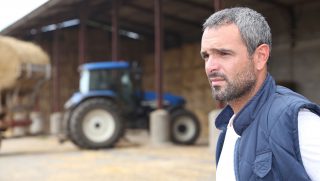Harvest and tillage practices this fall will set the stage for crop performance next spring. Justin Render, product specialist with Kinze Manufacturing, offers five recommendations to help farmers set themselves up for success in 2019 with their soil and residue management practices:
Minimize compaction: Wet weather and saturated soils increase the risk of compaction during harvest, creating problems that can last for many years. “Waiting for the soil to dry is the best option, but not always possible,” Render says. “Tillage is one way to manage surface compaction by taking care of ruts or tracks in the field.”
Distribute residue evenly: Make sure your combine is properly set up to handle crop residue. “Strive for even distribution of residue coming out of the combine,” Render advises. “Pay attention to your head, chopping and spreading systems for proper adjustment and operation, especially as harvest conditions change.” Crushing, breaking and shredding the stalks and spreading them out evenly, he adds, will help with stalk decay by exposing them to nature, speeding the decomposition process.
Manage crop residue with tillage: Render says the faster farmers can get residue near microbial life when temperatures are warmer, the faster residue will start decomposing. “Residue that is not incorporated or put into contact with the soil in the fall will typically take longer to decompose.”
Consider a winter cover crop: Keep carbon and nitrogen cycles in mind when selecting and managing cover crops. “Legumes capture nitrogen from the air and transform it into soil. Other crops, like grasses or brassicas, hunt nutrients in the soil and immobilize them in the root zone, saving them to mineralize at a later time when crops can use them,” he explains.
Consider optimal tillage methods: Render notes that hybrid horizontal tillage is an emerging practice that offers more residue incorporation, land leveling and full weed take-out compared to vertical tillage. “It also offers similar benefits of conventional tillage, but farmers get higher speed and capacity, no smear/stratification layers, and a better soil finish than other residue incorporation tools,” he states.
For more information, farmers can contact their Kinze dealer or visit their website.

